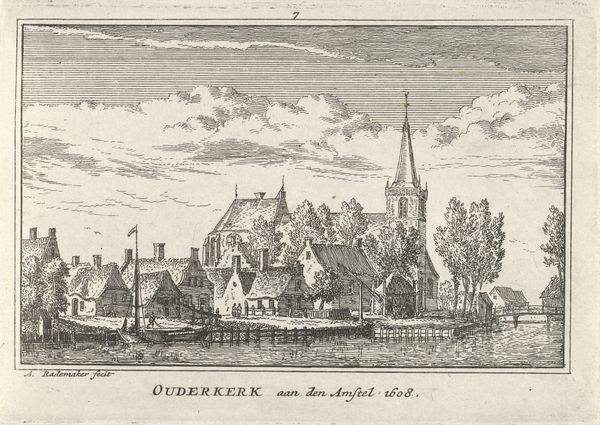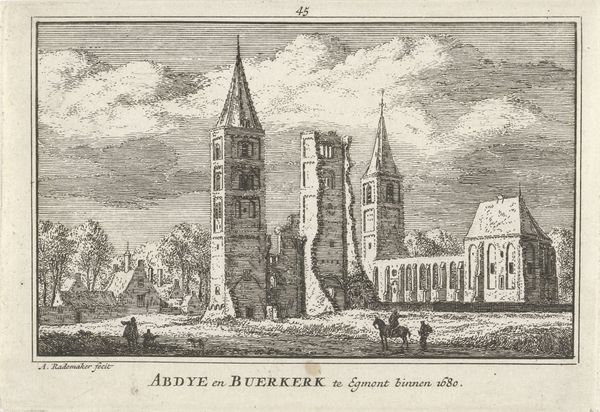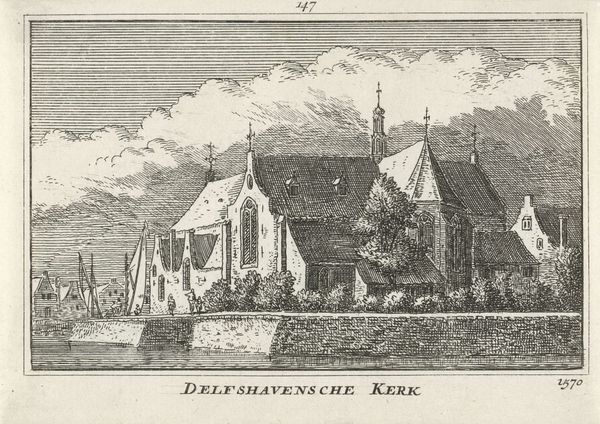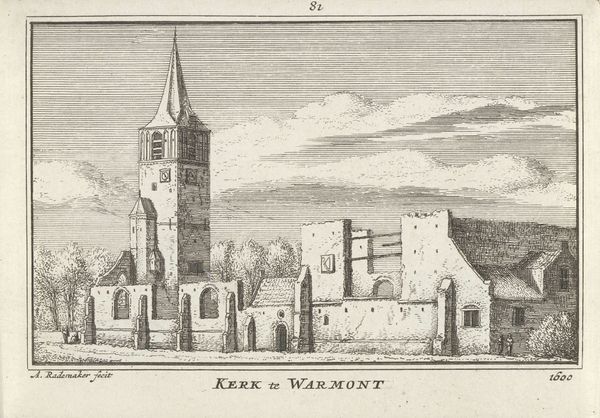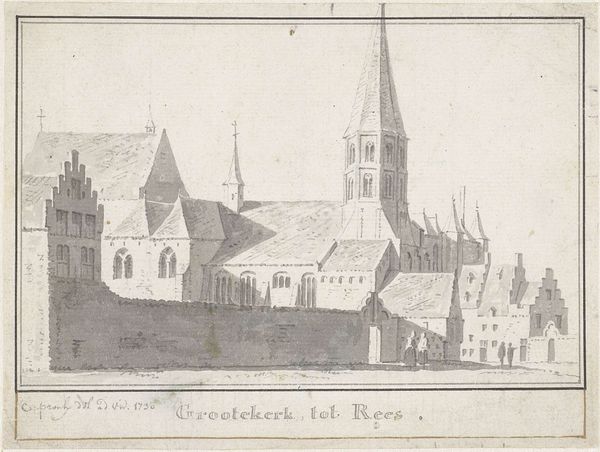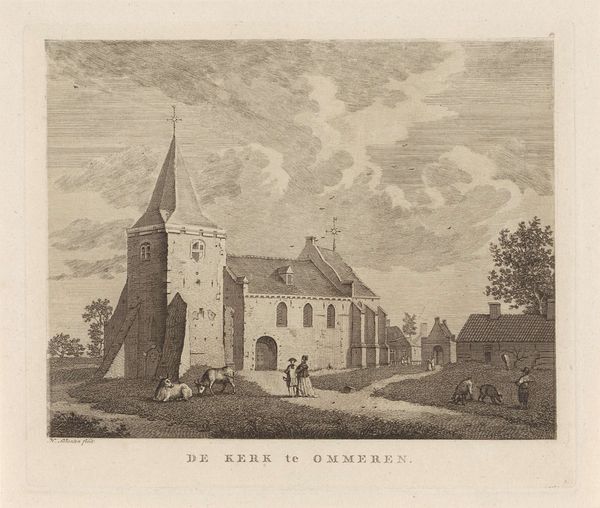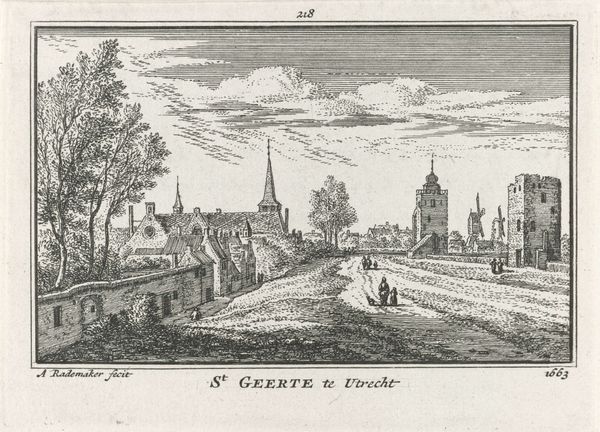
drawing, print, etching, engraving, architecture
#
drawing
#
baroque
# print
#
etching
#
cityscape
#
engraving
#
architecture
Dimensions: height 80 mm, width 115 mm
Copyright: Rijks Museum: Open Domain
Abraham Rademaker made this etching of St. Martinikirche in Emmerik sometime between 1675 and 1735. Note how the composition places the church on the right of the frame, giving it prominence, while the surrounding architecture and riverside activity fill the left. The image creates meaning through the visual codes of the time, the focus on civic and religious architecture emphasizing the importance of these institutions in 17th and 18th century Dutch society. Rademaker made many such topographical prints, which document the appearance of cities and villages at a time before photography. The level of detail suggests that he likely relied on first-hand observations, and that his prints were designed for a local audience who could recognize the buildings. Historians rely on prints like this to understand what a particular place looked like at a particular time. We can combine the visual evidence of the print with other kinds of evidence, such as maps, municipal records, and tax documents, to develop a detailed picture of the past.
Comments
No comments
Be the first to comment and join the conversation on the ultimate creative platform.

